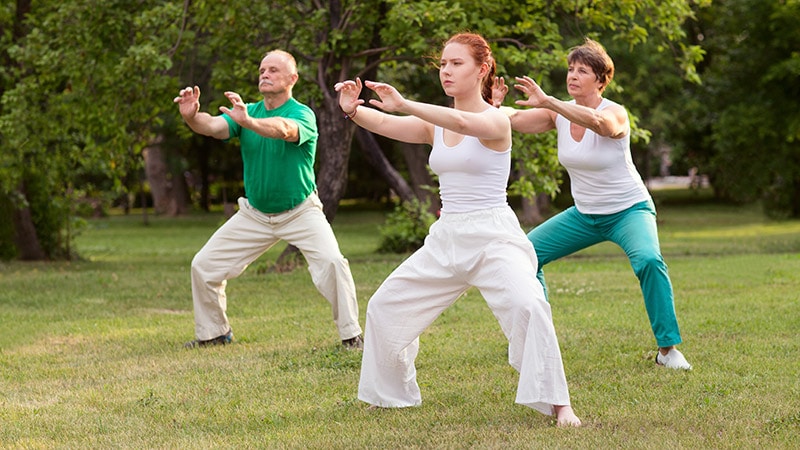TOPLINE:
Adults with diabetes who are physically active on weekends or who exercise regularly have a 21% and 17% lower risk for all-cause mortality, respectively, than people who are inactive. These benefits are mainly due to fewer deaths from heart-related issues, with ‘weekend warriors’ and regularly active participants showing 33% and 19% lower risks, respectively.
METHODOLOGY:
- Researchers analyzed data from the National Health Interview Survey on 51,650 adults with self-reported diabetes for a 21-year period beginning in 1997, tracking deaths through the end of 2019.
- Patients were divided into four physical activity groups: inactive (no moderate-to-vigorous physical activity [MVPA]), insufficiently active (MVPA < 150 min/wk), weekend warrior (MVPA ≥ 150 min/wk in 1-2 sessions), and regularly active (MVPA ≥ 150 min/wk in ≥ 3 sessions).
- The mean age was 61.7 years for inactive patients, 59.5 years for those who were less active, 54.7 years for weekend warriors, and 57.2 years for patients who were regularly active.
- The analysis included age, sex, ancestry, education, marital status, BMI, smoking, alcohol intake, chronic conditions, self-rated health, psychological distress, mobility difficulty, functional limitation, and diabetes medications.
TAKEAWAY:
- The dataset contained 16,345 deaths during a median follow-up of 9.5 years (5620 from cardiovascular disease and 2883 from cancer); compared with inactive people, weekend warriors had a 21% lower risk for death (hazard ratio [HR], 0.79; 95% CI, 0.69-0.91), whereas regularly active people had a 17% lower risk (HR, 0.83; 95% CI, 0.78-0.87).
- Compared with inactive people, weekend warriors had a larger reduction in heart-related deaths, with a 33% lower risk (HR, 0.67; 95% CI, 0.52-0.86), whereas regularly active people had a 19% lower risk (HR, 0.81; 95% CI, 0.74-0.88).
- The benefits for cancer deaths were smaller, with weekend warriors having nearly the same risk as inactive people (HR, 0.99; 95% CI, 0.76-1.30) and regularly active people having a slightly lower risk (HR, 0.99; 95% CI, 0.76-1.30).
- People who were not very active had a lower risk for death from all-cause mortality than inactive people (HR, 0.90; 95% CI, 0.85-0.95).
IN PRACTICE:
“This should be reassuring given the elevated premature mortality risk, distinct physiology, and low physical activity adherence among adults with diabetes,” the researchers reported. “These findings reinforce the importance of flexible physical activity patterns for people with diabetes as they can improve insulin sensitivity and glycemic control — especially for those who face barriers to maintaining regularly routine exercise.”
SOURCE:
This study was led by Haibin Li, PhD, of the Department of Cardiology at the Heart Center of Beijing Chaoyang Hospital, in Beijing, China. It was published online on July 22 in Annals of Internal Medicine.
LIMITATIONS:
Physical activity was self-reported, causing possible bias; only leisure time activity was measured, excluding other types of work or transportation; time spent sitting or inactive was not recorded; activity was measured only once, so changes over time were not recorded.
DISCLOSURES:
The authors reported no relevant financial disclosures.
This article was created using several editorial tools, including AI, as part of the process. Human editors reviewed this content before publication.
